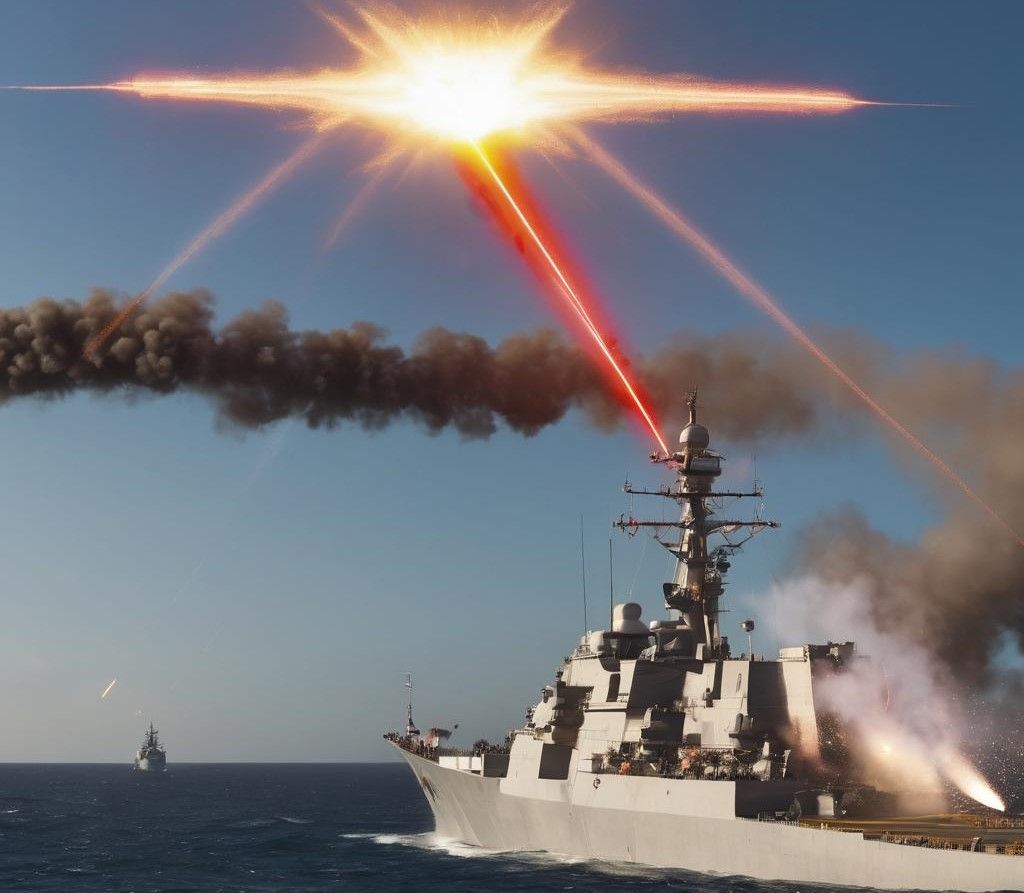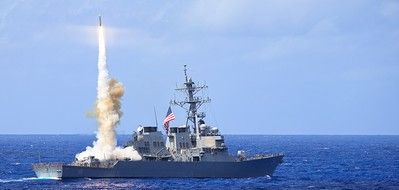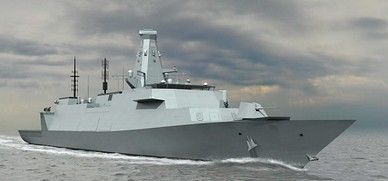Red Sea Drone Attacks Highlight Urgency for Laser Weaponry
How the potential cost savings of laser defences against cheap drones is pushing forward the development of directed-energy weapons.

The geopolitically sensitive and economically vital sea route through the Red Sea has become a conflict zone during the past few months. With Iran-backed Houthi fighters from Yemen firing at cargo vessels and the warships protecting them, military chiefs are urging for progress on the long-awaited development of lasers.
Since late October, the attacks by drones and anti-ship missiles have become an almost daily occurrence forcing a decline in shipping through the Red Sea (which carries 12% of global maritime transport), as cargo companies protect their vessels and crews. The overall result is causing delays as ships take the longer route round Africa, which has in turn driven up shipping costs by as much as 300%.

To date, the naval defence systems employed have largely been able to protect the ships, with only minor damaged and disruption caused. However, the cost of shooting down so much incoming ordinance is proving expensive.
As Politico reports, “The cost of using expensive naval missiles … to destroy unsophisticated Houthi drones — estimated at a few thousand dollars each — is a growing concern.”
At present, the safest US Naval response is the Standard Missile-2, a medium-range air defence weapon with a range of up to 130 nautical miles. However, this comes with a hefty price tag of $2.1 million per missile.
Other options, include the Evolved Sea Sparrow Missile, designed to fire at targets less than 5 nautical miles away, but they still cost $1.8 million each. Inside of that distance, and things get much cheaper but also riskier, by using something like a 20mm Close-In Weapons System (with a 1 nm range) or a ship’s 5-inch gun with air bust rounds.
However, with a $1 billion destroyer on the line, few commanders are keen to risk their vessel or its crew just to save money. As one former US Department of Defense official states, “My guess is the [destroyers] are shooting SM-2s for as long as they can — they are not in [the] business of taking chances on hostile targets getting close.”
It is an economically winning situation for the Houthi, even if they fail to hit any ships.
“That quickly becomes a problem because the most benefit, even if we do shoot down their incoming missiles and drones, is in their favor,” said Mick Mulroy, a military analyst and former Department of Defense official. “We, the U.S., need to start looking at systems that can defeat these that are more in line with the costs they are expending to attack us.”

With an expected cost of as little as $13 per shot, the answer could easily be high-energy lasers (HELs) which are designed to burn a whole through a variety of materials or high-power microwaves (HPMs) which can fry the electronic circuitry inside a drone or missile. If only their development can be finalised.
It is a frustrating situation for Western military chiefs, as currently only a small number of ships are equipped with lasers as part of a testing phase.
“When I was in Bahrain as [the Destroyer Squadron 50 commanding officer] 10 years ago, the afloat staging base USS Ponce had a laser on it,” explains Vice Adm. Brendan McLane, who is now head of U.S. Naval Surface Forces. “We’re 10 years down the road, and we still don’t have something we can field?”
The lack of laser weapons is not without trying, as a report by Navy Times makes clear, “The Defense Department is spending on average $1 billion annually to develop HEL and HPM weapons, with the goal of deploying them aboard ground vehicles, aircraft and ships.”
This has allowed a great deal of progress to be made, although a recent report on defence spending by a federal watchdog, has commented on the struggle to get “these technologies out of the lab and into the field.”

“Against some of the targets that have been shot, some of the systems that we have can be effective,” admits McLane.
The absence of HEL or HPM systems on board is not so much a failure in acquisition, but more of an unresolved hardware and software jigsaw puzzle, says Eric Wertheim, a defence consultant and U.S. Naval Institute columnist. He is also quick to point out the major challenge of finding the space and a power supply for directed-energy weapons on a ship that is already packed with energy-hungry sensors and battle management systems.
There is also the issue of firing capability in certain weather conditions, such as high winds or heavy fog, both of which diffuse the laser’s affect and targeting ability. It is also worth noting that laser weaponry can only fire in straight lines and line of sight, so anything hidden behind a hill or a building, or even over the horizon, is no longer a viable target.

That said, there are still great benefits to having laser weaponry, even beyond the issue of money. HEL or HPM systems can help ease the problem of logistics, as using just energy to shoot down a drone or incoming missile allows a fleet to conserve finite munitions supplies.
Additionally, notes the Navy Times, “Directed energy could complement the panoply of weapons a U.S. destroyer in the Red Sea has at the ready, and their widespread fielding would signal a revolution in military affairs on the level of fighter jets and missiles.”

The Americans are not alone in developing energy-based weaponry. Only last month, the UK Ministry of Defence announced that, “For the first time an aerial target [was destroyed] using a high-power shot with its DragonFire laser.” Adding that the successful tests were, “led by missile-maker MBDA, with partners Leonardo UK and QinetiQ [and] is the key element in a £100 million joint investment with the ministry to develop directed-energy weapons across several programs, including radio-frequency direct-energy weapons.”
While the testing of these systems has been known for several years, the key breakthrough for the British is the ability to track and then engage a moving target at range. This will, according to Shimon Fhina, the Ministry of Defence’s Director Strategic Programmes, allow the government to “accelerate the next phase of the program.”
Although a spokesperson with the Defence Science and Technology Laboratory added the caveat that the “timing of any deployment into U.K. service depends on a number of factors, but could be within the next 5 to 10 years.”
Consequently, the Royal Navy is reported to be planning a retrofit for a 150-kilowatt-class laser directed-energy weapon on all new Type 26 frigates beginning in the early 2030s.

“There is a lot of work going on in countries like the U.S., Russia, and China — most of it classified. But the U.K. has a long history in laser and radio-frequency work, and while we can only dream about the funding levels countries like the U.S. obtain, we [managed to squeeze] quite a lot out of our funding. It’s transitioning the technology to the marketplace that is the problem,” notes Doug Barrie, an air warfare analyst at the London-based International Institute for Strategic Studies think tank.
Despite the costs and research issues the need to develop direct energy weapons is clear. Their precision targeting capabilities, their cost-effectiveness, their minimal logistics in comparison to conventional ammunition, their ability to engage multiple targets simultaneously and at high speeds, and the versatility for use against missile threats, low-cost drones, counter-terrorism operations, and even space-based warfare, all mean that laser weapons will likely play a crucial role in shaping the future of warfare.
As UK Defence Secretary Grant Shapps concludes, “This type of cutting-edge weaponry has the potential to revolutionise the battlespace.”
Photo credit: Flickr, Picryl, Flickr, Jan van der wolf on Pexels, Flickr, The Daily Guardian, Flickr, Picryl, & Gencraft

